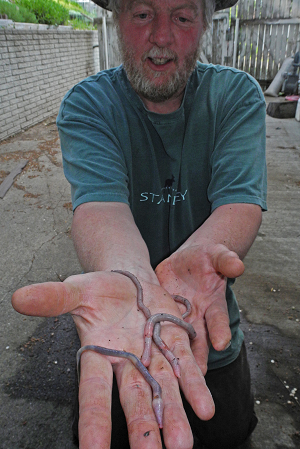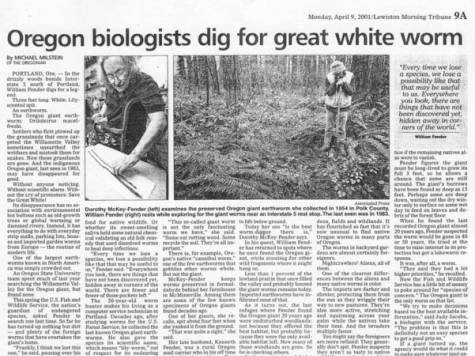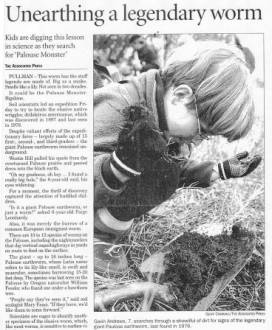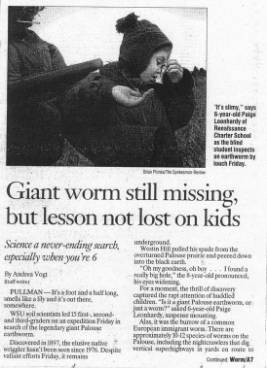"I submitted two specimens to the University of Idaho from Paradise Ridge in 2012," said Cass Davis. "Since then, I have been searching for more but have been unsuccessful, until the other day. I'm very confident that these three new specimens are also the rare Giant Palouse Earthworm."
The Giant Palouse Earthworm was considered by some scientists to be extinct until a 2005 discovery by a University of Idaho graduate student in Albion, WA. In 2010, another university graduate student, along with a research support scientist, found two more worms that were eventually confirmed.
"It's really cool that potentially a few more Giant Palouse Earthworms have been found on the ground surface here in the Palouse," stated David Hall of the Palouse Prairie Foundation. "It is important to preserve the habitat in which they live. There are probably very few left, and they may have an important role in production of the great soils we have here."
The native Palouse Prairie is recognized as one of the most endangered ecosystems in the United States. There is less than 1% of native prairie remaining.
"These giant earthworm specimens provide additional evidence concerning the importance and uniqueness of Paradise Ridge and the Palouse region," said Tim Hatten with the Moscow-based Invertebrate Ecology. "Whether it's rare plants, rare worms or native pollinators, they are all important pieces to what's left of the Palouse Prairie and they deserve protection."
The Giant Palouse Earthworm is native to the Palouse region and is one of the few native worms in all of America. After receiving a petition by conservationists to list the worm under the Endangered Species Act, the US Fish & Wildlife Service ruled in 2009 that there was not sufficient data to warrant listing.
"After the Palouse Prairie was reduced to wheat and lentil fields at the beginning of the 20th century, there have only been about a dozen Giant Palouse Earthworms found by scientists and volunteers," said Steve Paulson of Friends of the Clearwater. "It is time to protect the Giant Palouse Earthworm. Failing to protect the worm would be the equivalent of throwing away our heritage."

Photo by Henry Moore Jr.
Radio coverage from KRFP: Evening Report – Mon., May 18, 2016 – Giant Palouse Earthworms Found




 Lewiston Morning Tribune. Lewiston, ID. April 9, 2001. Portland, OR. Michael Milstein of The Oregonian.
Lewiston Morning Tribune. Lewiston, ID. April 9, 2001. Portland, OR. Michael Milstein of The Oregonian.
 The Columbian. Vancouver, WA. August 22, 1999. Pullman, WA. The Associated Press.
The Columbian. Vancouver, WA. August 22, 1999. Pullman, WA. The Associated Press.
 The Spokesman Review. Spokane, WA. November 20, 1999. Andrea Vogt, staff writer.
The Spokesman Review. Spokane, WA. November 20, 1999. Andrea Vogt, staff writer.